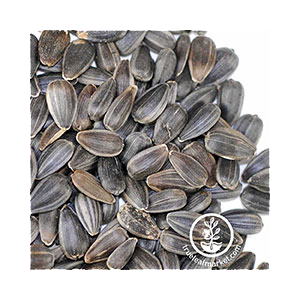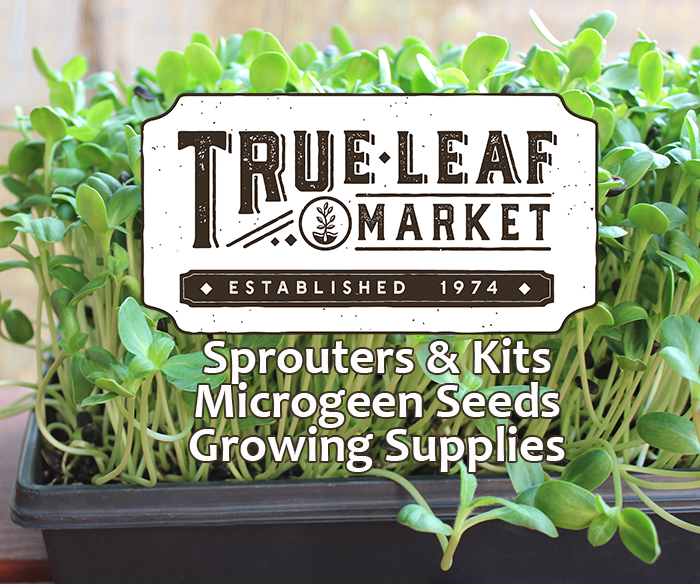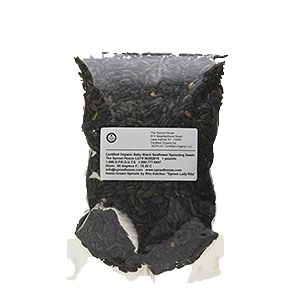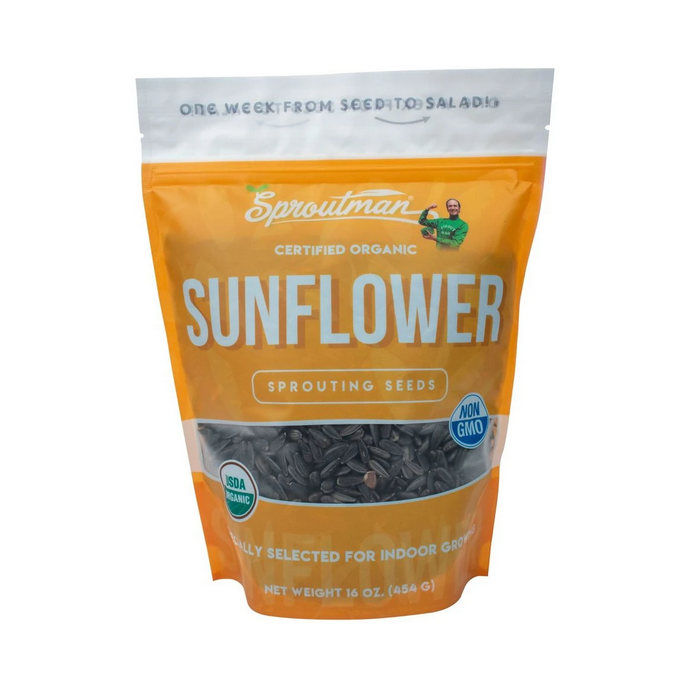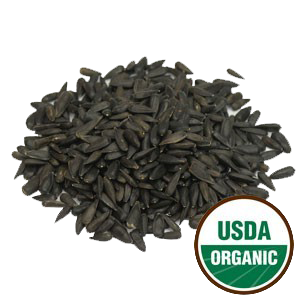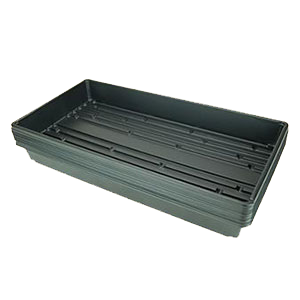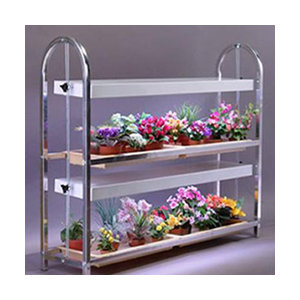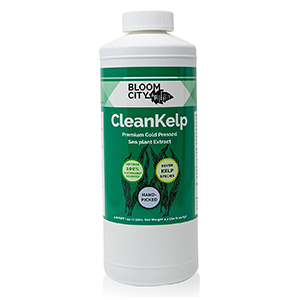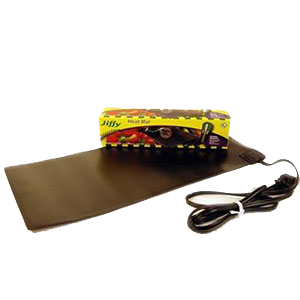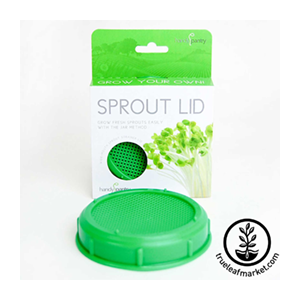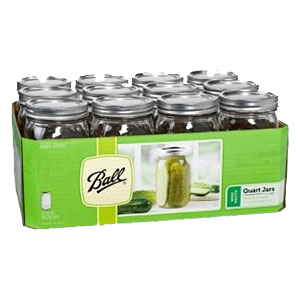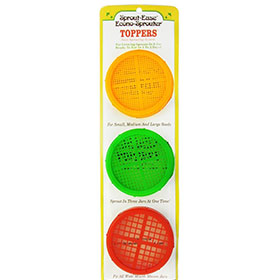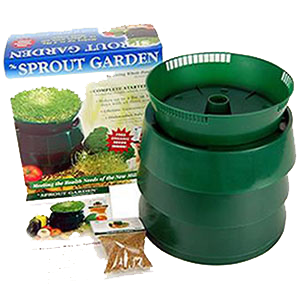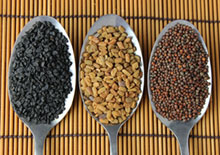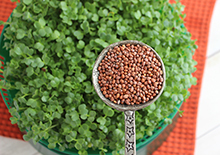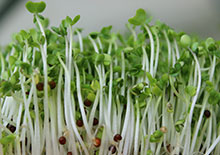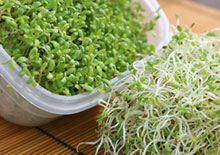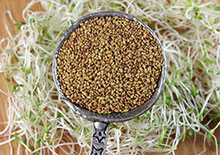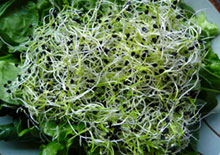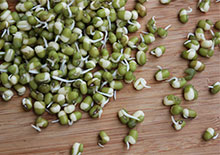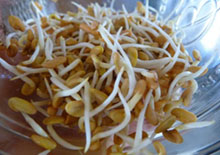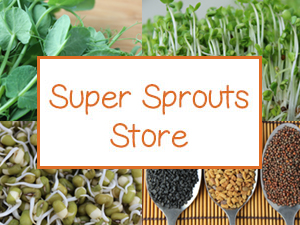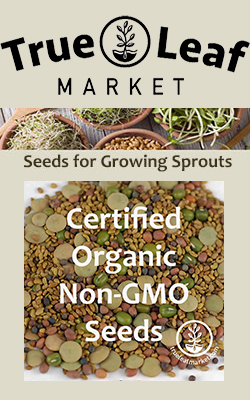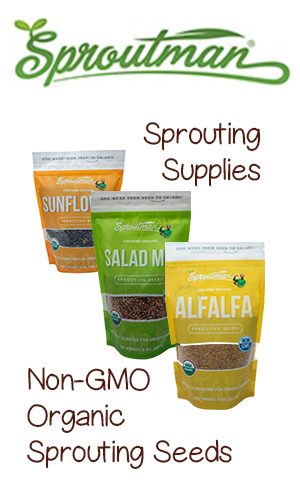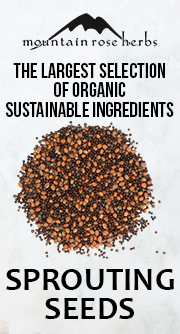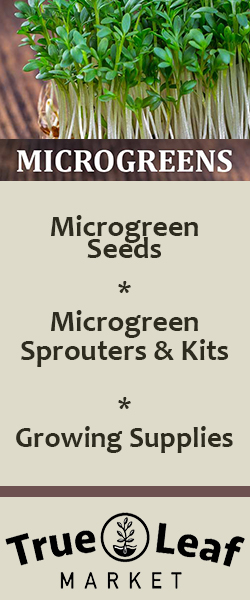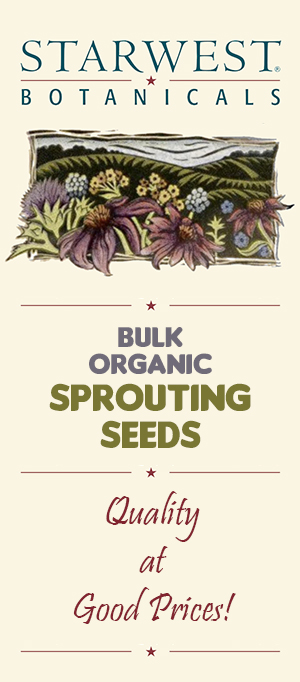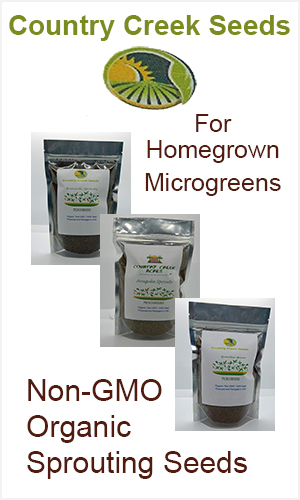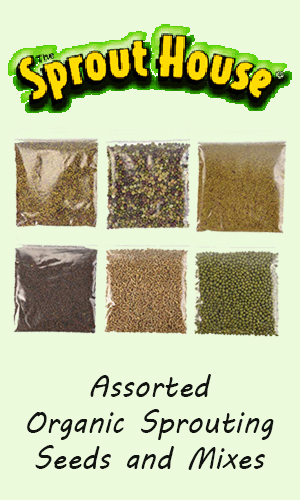- Home
- Super Sprouts
- How to Grow Sunflower Sprouts
How to Grow Sunflower Sprouts, A Tasty Chlorophyll-Rich Protein Source
Intro | Nutrition | How to Grow Sunflower Sprouts | The Steps for Growing | How to Harvest | Problems with Mold Growth | How to Use | Shop
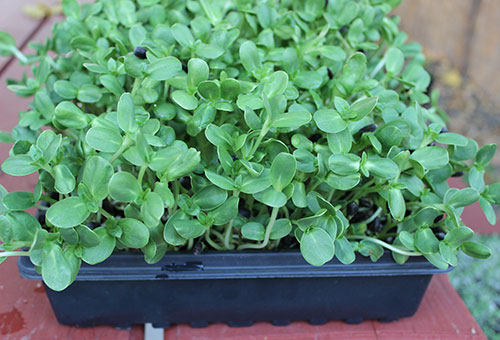
Want to learn how to grow sunflower sprouts at home for a delicious and nutty microgreen you can harvest fresh from your own kitchen counter? Well, you will be happy to know that the process of growing them doesn't take much time and requires very few tools or supplies.
Once you get down some of the basic techniques we discuss below, you will be well on your way to sprouting these fresh, crunchy, thick leafy sprouts to use in salads, wraps, sandwiches as well as green juices.
Table of Contents
Intro | Nutrition | How to Grow Sunflower Sprouts | The Steps for Growing | How to Harvest | Problems with Mold Growth | How to Use | Shop
They are an inexpensive way to grow your own produce indoors in the colder months, with one tray of greens yielding between 1-2 pounds of sprouts. Alternatively, they can be grown outside in partial sunlight when warmer seasons permit.
Also called "sunflower greens", they are a quintessential seed sprouting variety because of their larger size, tasty chlorophyll-rich leaves and succulent white stems. They are typically grown from a certain variety of unshelled sunflower seed called "black oil sunflower", which are smaller black seeds rather than the larger, lighter-colored striped seeds many of you may be familiar with.
They are different from jar sprouted sunflower, which uses shelled seeds and does not produce long leafy sprouts, but small short ones with underdeveloped leaves.
Sunflower greens must be grown on soil much like the process of growing wheatgrass, buckwheat, pea shoots and other microgreens. The greens can also be grown using soil-less mediums like vermiculite, coco peat mats or hydroponic water-based solutions.
For those of you interested in growing other types of microgreens, sunflower is a great one to start with as they tend to be easier to grow than other tray sprout varieties.
Sunflower Sprouts Nutrition
Sunflower sprouts are not only delicious, they are also quite nutritious and are rich in a number of vitamins and minerals as well as chlorophyll, amino acids, lecithin, choline, protein and fiber.
The sprouted greens contain between 20-25% protein with all essential amino acids and are considered a complete protein-rich food. The sprouted seed, as opposed to the sunflower seed itself, is high in natural enzymes making its protein and other phytonutrients easier to digest and assimilate.
Sunflower sprouts contain vitamins A, C, E and B vitamins as well as the minerals calcium, iron, magnesium, niacin, zinc, selenium, potassium and phosphorus.
Sunflower seeds and especially their sprouts provide a source of specific nutrients such as lecithin and folic acid.
Lecithin is an
important nutrient for breaking down fatty acids, like the omega-3's, from the foods we eat
to effectively utilize them. Lecithin keeps our joints, tendons and bones healthy and strong. Choline is a component of lecithin and
a nutritionally important precursor to the neurotransmitter acetylcholine,
which is vital to nerve and muscle function and needed for proper liver
metabolism.
The sprouts are also particularly high in the B complex vitamin called folate or folic acid, which is a dietary nutrient needed by pregnant women and their developing fetus.
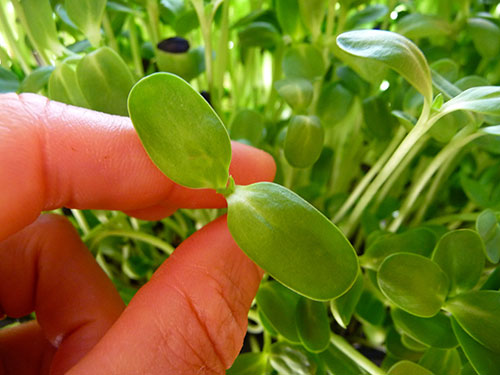
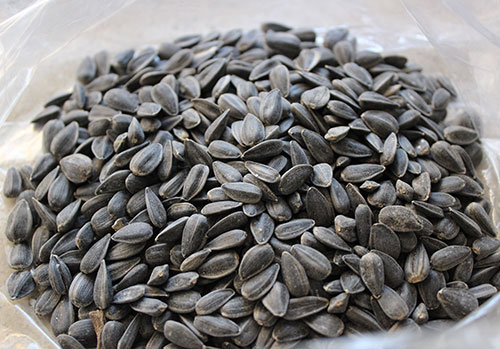
How to Grow Sunflower Sprouts
As we mentioned, vertical tray grown sunflower sprouts are sprouted using a tiny black unshelled sunflower seed called the black oil sunflower.
This variety grows and produces the best healthy green sprouts, although they can be grown from other types. The black seeds can be difficult to find at your local health food store and usually have to be ordered by mail. They are commonly available in bulk quantities, by the pound or 25 pound bags.
The "how to grow sunflower sprouts" method we share below uses a soil-based growing medium that is mixed with worm castings and watered with seaweed solutions. This gives your sprouts additional minerals that they will love and that you will later consume as nutrients.
How Long Do They Take to Sprout?
The process from start to finish takes about 8-12 days and yields 1-2 pounds of sprouts per 20" x 10" tray.
The Steps for Growing Sunflower Sprouts
1) Pre-sprouting Your Unshelled Seeds
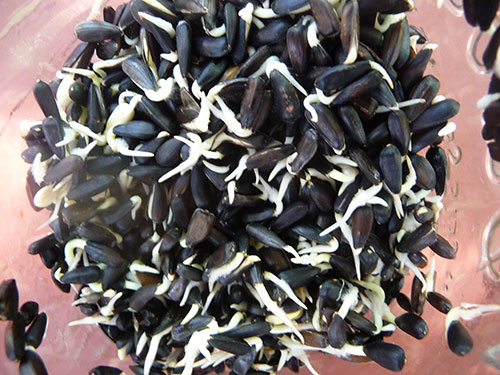
This is a necessary step that involves jar sprouting the unshelled seeds. To do this simply soak 2C of seeds overnight (as recommended in our sprouting guide in the link below) in a quart-sized wide mouth mason jar of pure water.
Drain and rinse them the next day, placing a mesh sprouting lid on your jar. Turn the jar upside down tilted at an angle to sprout them and allow excess water to drain out. This usually takes between 1-2 days depending on the temperature. It is best to do this out of direct light.
You will need to rinse and drain them twice daily, in the morning and again at night during this process. They are ready when you see the little white roots (1/8-1/4 inches) just popping out of the pointed end of the unshelled sunflower seed.
2) Preparing Your Soil Medium
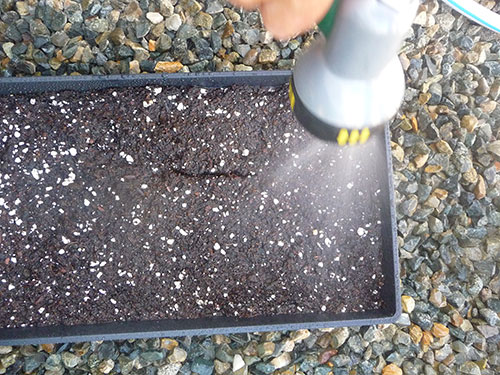
We typically use between 1-2 inches of soil to fill a 20" x 10" sprouting tray. Generally, the more soil you have the less you will need to water them.
This tray size works well for 2 cups of sprouted seed. You can however use other types of trays; some people prefer using wood or clay rather than plastic.
We use a high quality organic soil mix, which we blend with up to 20% worm castings. After you place the soil in the tray, pack it down and mist the top with water to thoroughly moisten it.
3) Laying Down Your Seeds
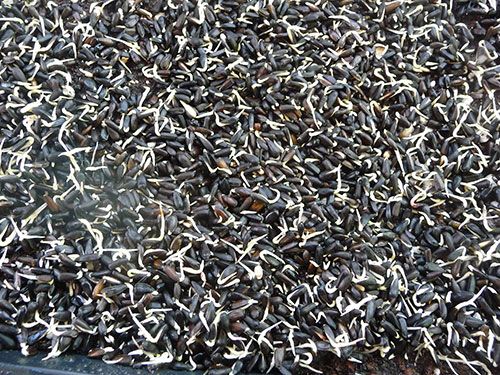
The next step is to take your jar of sprouted sunflower seeds and place them ON TOP of the soil mix. Spread them out as evenly as you can. Don't worry if they are stacked on top of each other, the roots will find the soil medium below to grow in.
Press the seeds down lightly with your hands, mist them well, and place an upside down tray as a lid on top of the bottom tray.
This will help to incubate your sprouts, as they tend to grow better in a dark, moist environment during the initial sprouting process.
4) Greening the Sprouts
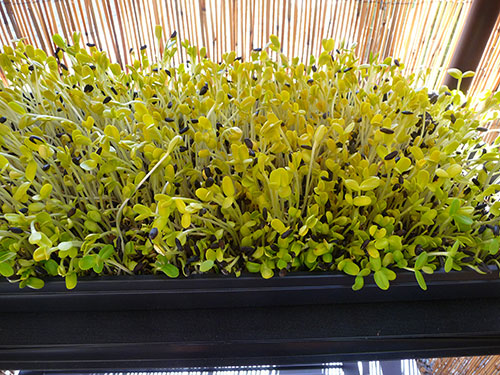
When they reach the top of the upper lid, this is when you remove the lid and allow them to "green" in indirect sunlight.
The
sunflower sprouts will be a yellow color at this point but will start
to turn green soon after they are exposed to light. This is called "greening the sprouts" and can be achieved in a bright sunlit window, partial to direct outdoor sunlight or indoor full spectrum grow lights.
5) Watering Your Sunflower Sprouts

The rest of the process of how to grow sunflower sprouts involves watering them daily. When the sprouts are young, a light mist will do fine.
As they mature you will need to water the soil in addition to lightly misting the sprouts. It is important to make sure they are not too dry but not too moist.
You can usually tell this by picking up the tray and feeling the weight of it.
When you have a full tray of green sprouts you can place them in mild direct sunlight to increase the chlorophyll content and overall life-force.
How to Harvest
At about day 10, or right before the second set of leaves develop, you will be ready to harvest and eat your sprouts.
To do this you can use a pair of kitchen scissors and cut the stems at the base above the soil level. Be sure to remove any of the black seed hulls that have a tendency to hang off of the leaves.
You can keep your sunflower sprouts growing, snipping off fresh sprouts as you need them, or you can harvest them all at once if the second set of leaves are starting to bud. They are less edible after this has occurred and become more fibrous and fuzzy, getting ready for life as a sunflower plant.
They can be stored, like any salad produce, in a plastic bag or sealed container in the refrigerator and will last many days.
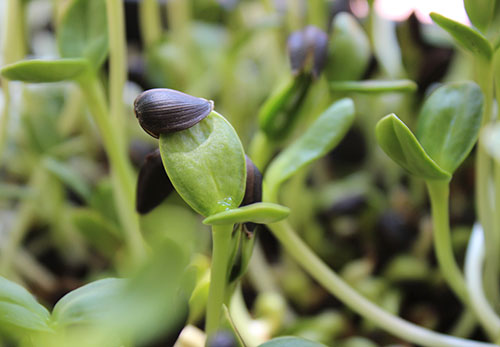
Problems with Mold Growth
White Cotton Mold
Sometimes, especially in humid and hot climates, mold can occur at the base of the sprouts. Also, if they are too moist or lack sufficient air flow this can encourage mold growth as well.
This type of mold, which is a white and fuzzy cotton mold, usually grows just above the soil's surface. It can be sprayed down to the soil level and the sprouts on top can be rinsed off and are fine to eat.
If you are concerned, you can additionally rinse the harvested sprouts with a diluted food grade hydrogen peroxide solution or spray it directly at the base of the sprouts as they grow.
Blue or Brown Colored Molds
Two other types of molds that are a lot less common include a blue or brown-colored mold. The blue mold grows directly on the seed itself, usually on freshly sprouted seeds. If this occurs, you must discard them and try again using a sanitized jar and healthy viable seeds.
The other is a brown mold that occurs in the roots, moves up to the stalk and will effect the success of your sunflower seed sprouting.
Both of these mold varieties are more likely a problem in hot climates with poor ventilation, but they can also arise from a bad batch of seeds. It is very unlikely that you will ever experience either of these molds in your sunflower sprout growing process, but it is good to know about them just in case.
For Those with Allergies to Mold
It, of course, goes without saying that if you are highly allergic to molds of any kind you should avoid eating sprouts grown in soil that has mold and start a new tray.
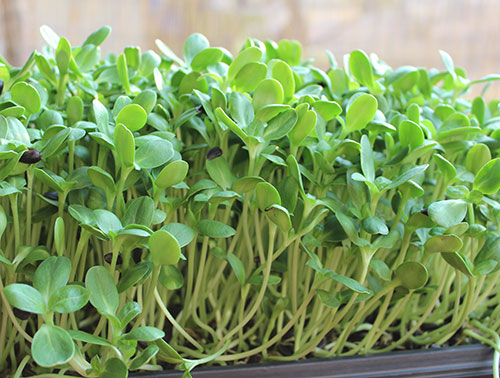
Buying Black Sunflower Seeds
Black sunflower seeds are sometimes hard to find, not all health food stores carry them. It is best to buy them by the pound in sealed bags that maintain freshness and their ability to sprout healthy greens. It is of course good to also purchase sprouting seeds that are organic and non-GMO.
We buy most of our sprouting seeds from True Leaf Market and Sproutman. They have the best prices and offer a high quality organic seed selection.
How to Use
Sunflower sprouts can be enjoyed with almost any meal, adding fresh fiber, enzymes and assorted nutrients.
They are delicious with other types of sprouts, like alfalfa, broccoli, radish and fenugreek sprouts.
For more info about sprouting visit our how to grow sprouts and sprouting seeds page in the links below.
Shop Related Products (About Affiliates & Amazon Associate Paid Links)
Affiliate Disclaimer: This section contains affiliate product links. If you make a purchase through our recommended links, we receive a small commission at no additional cost to you. Thanks for the support.

